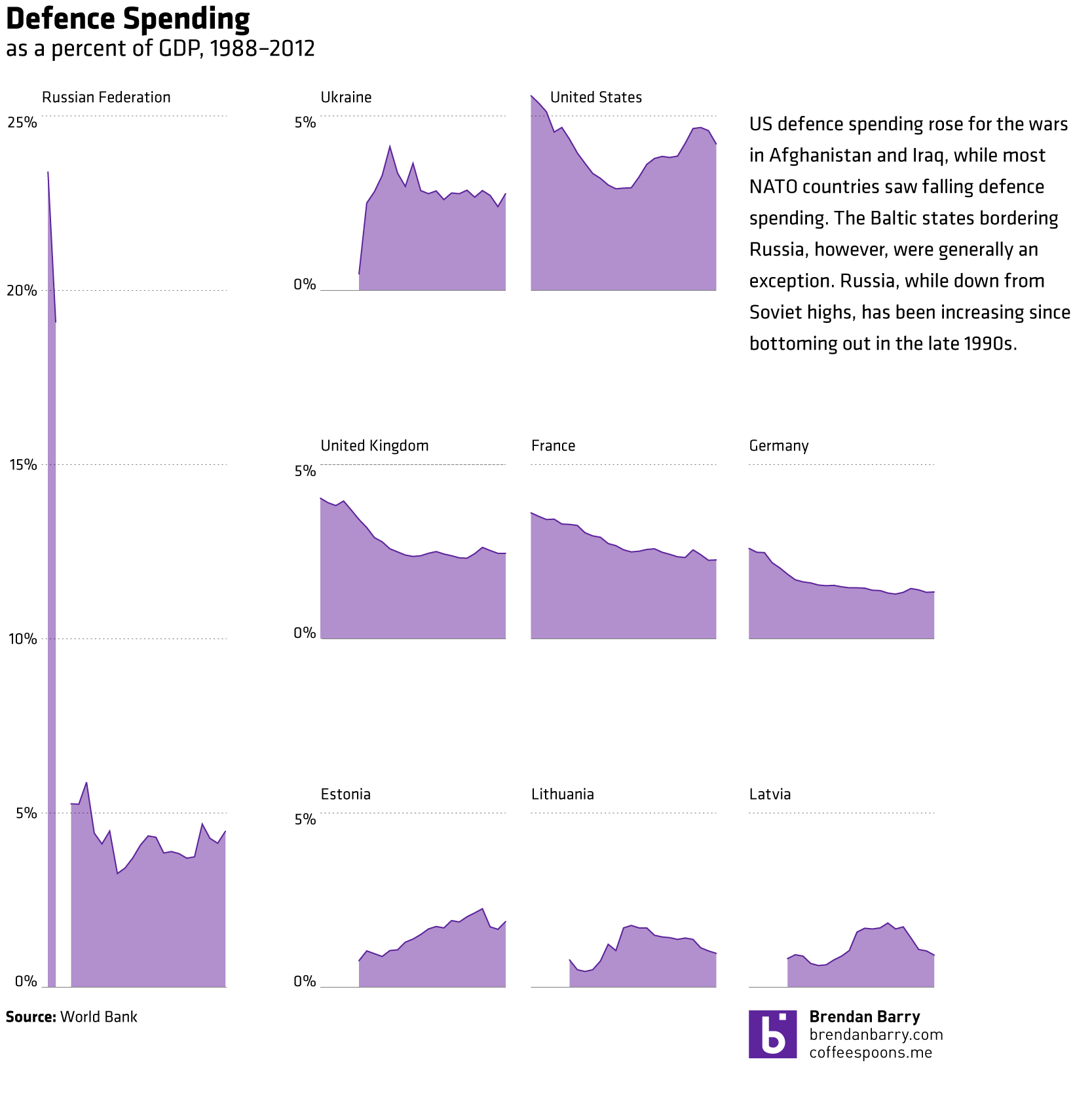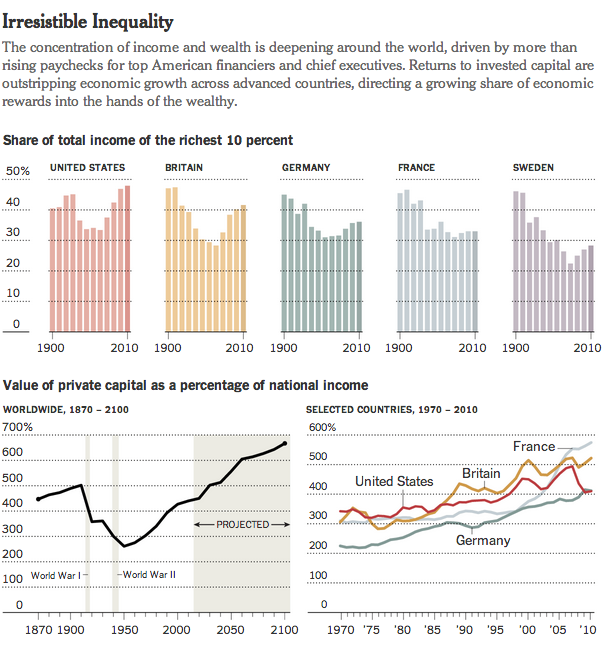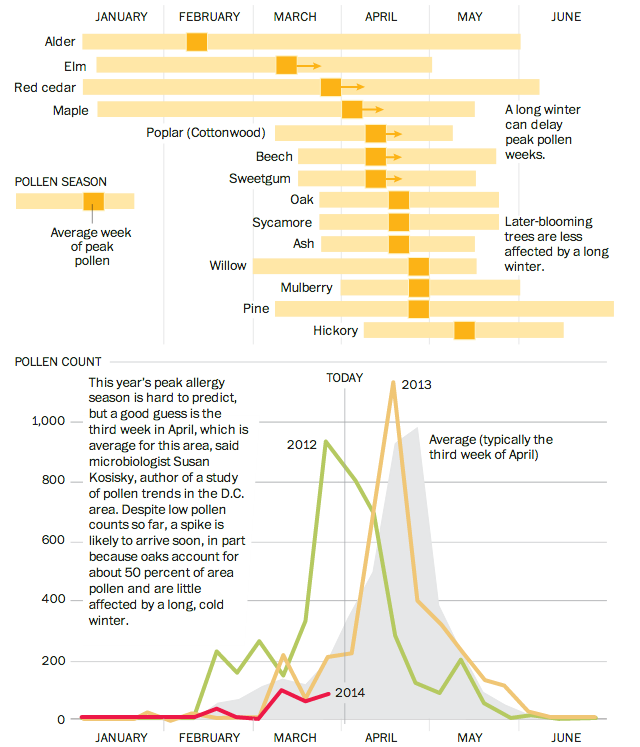As troops and tanks and rumble around the Ukrainian–Russian border, I was left to wonder just how NATO has been doing with defence spending. So I took defence spending as a share of total GDP. In general, NATO countries have been spending less since the end of the Cold War. The Baltic states are a bit of an exception. I would guess that is based on their fears of their big Russian neighbour. A fear that, as Ukraine shows, is not entirely irrational. The United States, of course, has been spending a lot because of Afghanistan and Iraq. As for Russia, after the collapse of its economy in the late 1990s, it’s been spending more and more on the military.

The data comes from the World Bank.










